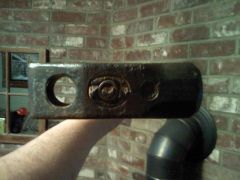I took a lot of Agriculture Mechanics classes as electives in high school. I had been around welding my whole life, but never had any experience with galvanized. My instructor gave me a pile of pipe and asked me to make him some gates. I could weld like the wind blows-especially with the brand new Miller MIG welder and auto darkening helmet. I was welding in the back corner of the shop in an area that was not ventilated. I built six 16 foot gates and two 12 foot gates in about a hour and a half of work. I was in great physical shape at that point in my life. In fact, I had to travel that evening to an out of town basketball game-about 3 hours from home-on a school bus. Less than 2-3 hours after welding, I felt dizzy and nauseous. By the time the basketball game was over I could barely stand up. I had trouble breathing, felt like I had a D8 dozer parked on my chest, and felt like I could throw up any second. Symptoms were almost flu like. Every joint in my body ached. After riding on the darn school bus all night and fighting the urge to hurl- I finally did throw up when we got back home about 1 a.m. I continued to be sick all night and well into the weekend. I can tell you from experience, this is one mistake that I will never make again. It does not matter what type of metal/material you are heating, cutting, grinding or welding-you must operate in a WELL VENTILATED AREA and if at all possible avoid using highly hazardous materials to construct projects. In this day and age there are great resources for respirators(especially if operating in a confined area) and venting devices (simplest of which is a box fan). If you are required by your job duties to work with these materials-then in many instances your employer is required to supply or compensate you for proper PPE. OSHA/ANSI have standards covering this topic in great depth. When handling a gun-always treat it as if it is loaded-so when welding treat every metal and consumable as if it will kill you with one whiff. As with many other topics-Prevention is the best medicine.....Sorry for being long winded-but this one hits close to home for me!

